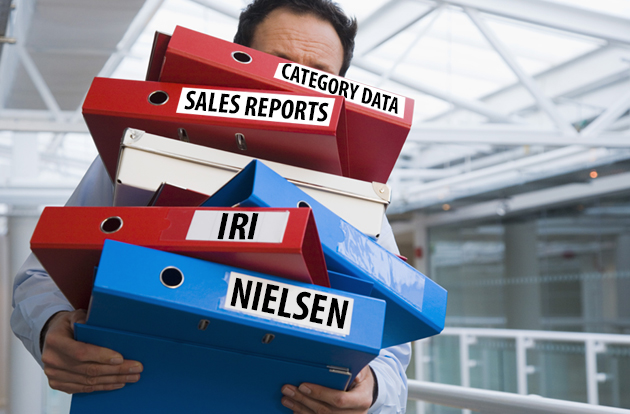Wading through CPG Data can be daunting, so find what’s important.
Data without insights is just ones and zeros. While the data points are neatly arranged in columns and rows (Total Category Sales, Dollar Sales, Units, Percent Increase, BDI and CDI Index, ACV – and the list goes on and on), the amount of data in many reports makes scrolling and adjusting the screen to try and get it all in view, and readable, extremely daunting. It feels like setting your alarm for a 4:31am workout – you know you should, and you know you can, but it sure isn’t going to be easy.
The truth is, determining what data points are most important for the task at hand can create a real dilemma. We all want the data to point us to a conclusion that makes our organization wildly successful. It’s not that all of the data isn’t important, it really comes down to being able to prioritize what data points should have the most weight in helping to support or weaken a premise.
Just because all of the column titles on a report seem vital to getting the whole story, the real question is, what’s the data telling you? It’s right there. It’s not encrypted. It’s simply numbers.
This is where a very important part of the process surfaces – order. The order in which the data points are applied when turning a premise into a strategy is critical. What order creates the best insights? We’ve found the answer to this question is very different, depending on whom you are talking to in an organization.
This is not to imply that there should only be one way to look at the data. In fact, the exact opposite approach (looking at the same data differently, by altering the order) is not only necessary, but is also very healthy. Fundamentally, this keeps the data from being manipulated to tell the story based on a pre-conceived premise or strong opinion. And, if looking at the data only in one way was the solution, our IRI and Nielsen reports would list only a few data points that all marketing and sales teams would need. What’s more, the implications would lead to both a linear and simpler conclusion.
A few questions to consider:
Is the data showing that your brand is gaining or losing value – dollars vs. units?
Are BDI and CDI indexes the most important points of data?
What is total category sales telling you?
Where does ACV fit into the evaluation process?
Data points that are the most important help make actionable business decisions, develop strategy and set baselines for objectives. So, if and when you are tasked with “crunching the numbers” and are needing some advice (or even just a different perspective), let us put our years of experience and proven track record to work for you.






